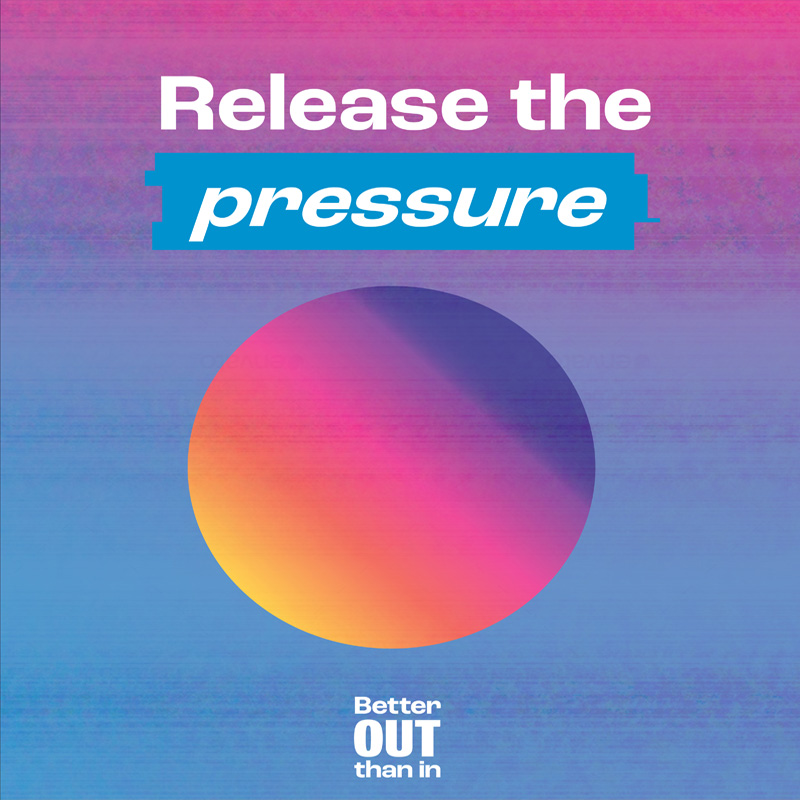- ‘Self-esteem’ is a word used to describe how people feel about themselves.
- If someone has good (or high) self-esteem, they feel comfortable, happy and pleased with themselves.
- If someone has not so good (or low) self-esteem, they are likely to feel unhappy, not very confident and dislike parts of themselves.
- Self-esteem is related to our mental health and wellbeing. The higher our self-esteem, the better our mental health and wellbeing is probably going to be.
Self-esteem and LGBTQ+ people
- For lesbian, gay, bisexual, transgender, queer (LGBTQ+) people, having good self-esteem can sometimes be tricky. This also depends on how other people around us make us feel.
- Messages from other people, social media, and some people around us may make us feel bad about any of the ways we are individual or different. Some people might make us think our identity is ‘wrong’ or ‘not normal’.
- Because of this, we might start to believe it, even if it isn’t true! Some of the things people say may start to play on our mind, and upset us.
- It’s important we get support if we are noticing our self-esteem is low, because we know that low self-esteem for LGBTQ+ people can lead to other difficulties. This can include difficulties with eating, hurting ourselves or relationships with other people.
Tips to manage low self-esteem
Catch it
Change it
Check it
Contextualise it
Catching low self-esteem
In order to understand what might be keeping low selfesteem around, it is helpful to keep a record. Think of it like a self-esteem diary, or self-esteem tracker. This helps us to “catch” low self-esteem thoughts and understand any patterns.
Checking out low self-esteem thoughts
Once we have begun to catch when low self-esteem creeps in, we now need to try check the facts. The best way to do this is to understand how helpful or unhelpful our thoughts are in various situations. This is because we know that thoughts in our head can influence how we feel.
Am I blaming myself when I haven’t done anything wrong?
What would I say to a friend in this situation?
Am I focussing just on the bad stuff, and not thinking about the good?
Is my thought actually really valid, and letting me know that I should do something to keep myself safe?
Changing low self-esteem
OK, we have caught low self-esteem, and begun to understand when it might show up. We’ve then checked out some of the thoughts we noticed to consider how helpful they are. The next thing to do is try to change some these thoughts, or change what we are doing.
Changing thoughts
Think to myself: out of 100, how much is actually down to me?
Imagine myself as a detective – what other facts might I find?
Think to myself: at least I gave it a try, rather than doing nothing.
Changing behaviour
Give it a go: even I don’t feel 100% confident, I can give it a go.
Do things with someone else: even if they are on the phone.
Ask other people for their advice, so we don’t have to do it alone.
Contextualise low self-esteem
One important thing to consider with low self-esteem is context – what is going on? Importantly, is it within my control, and is it affecting my safety? As LGBTQ+ people, we sometimes can’t change big things like laws and policies very easily, though we can consider how we interact with our context, and protect our own bubbles.
I can ask myself: am I feeling pressure from social media, or from friends, to ‘act’ or ‘be’ a certain way?
I can ask myself: is my school or college supportive of my identity? If not, who can I talk to, to raise this?
I can ask myself: are there certain things that make me feel better, or worse, about myself? Can I do more of what makes me feel better, and less of what makes me feel worse?
I can ask myself: are there certain laws or rules that mean I can’t do something that others can? If so, who can I contact to express how I feel about this?
The self-esteem thermometer

A helpful way to gauge our own self-esteem is to use the ‘self-esteem thermometer’. Being in the green zone means we feel good about ourselves. Yellow means we mostly feel OK. Orange means we don’t really feel OK, and red means we feel quite bad about ourselves. Perhaps consider where about on the thermometer you sit at the moment?
Based on your current ‘self-esteem zone’ – there are some ideas below for what to do to improve, or maintain, your self-esteem:
Green Zone Actions:
Avoid comparisons to other people
Smile and laugh
Try new things
Connect with friends
Get outside in nature
Yellow Zone Actions:
Write down five things I like about myself
Spend time with others who make me feel good
Do something I know I am good at, or enjoy doing
Orange Zone Actions:
Focus outwards, on things around me, rather than inwards
Break down tasks into manageable chunks
Talk to someone about how I’m feeling
Red Zone Actions
Get support from a helpline or organisation
Distance myself from unhelpful people around me
Remind myself I am not responsible for what other people think of me
Write down how I’m feeling
